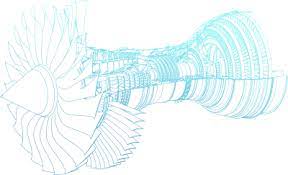Physna: A Game-Changer in the World of AI-Powered 3D SequoiaWiggersVentureBeat

The Birth of Physna: A Glimpse into its Origins
Physna was founded in 2015 by Paul Powers, a computer science graduate from Ohio State University. The idea behind Physna stemmed from Powers’ fascination with the potential applications of AI in the realm of 3D modeling. Recognizing the limitations of existing tools, Powers set out to develop a platform that could revolutionize the way professionals and enthusiasts interact with 3D models.
How Does Physna Work?
At its core, Physna utilizes advanced algorithms and machine learning techniques to analyze and understand the structure of 3D models. The platform’s AI engine can identify and extract key features from these models, enabling users to search, compare, and manipulate them with ease. This breakthrough technology eliminates the need for laborious manual categorization and tagging of 3D models, saving valuable time and effort for designers and engineers.
Applications Across Industries
The potential applications of Physna are vast and span across various industries. In the manufacturing sector, for instance, Physna can streamline product design by allowing engineers to quickly search for existing 3D models that match their requirements. This not only accelerates the design process but also reduces the need for redundant modeling efforts. Additionally, Physna’s AI capabilities can aid in quality control by identifying potential flaws or inconsistencies in 3D models, ensuring optimal product performance.
In the field of architecture and construction, Physna can be a game-changer. Architects can leverage the platform to search for existing building components or design elements, saving time and resources. Furthermore, Physna’s ability to analyze the structural integrity of 3D models can help identify potential weaknesses or design flaws, enabling architects to create safer and more efficient structures.
The entertainment industry can also benefit from Physna’s capabilities. Animators and game developers can utilize the platform to search for pre-existing 3D models, characters, or assets, reducing the time and effort required for creating new ones from scratch. This not only expedites the production process but also enhances collaboration among different teams working on a project.
The Future of Physna
As Physna continues to evolve, its potential impact on various industries is becoming increasingly evident. The platform’s ability to analyze and understand 3D models opens up a world of possibilities for professionals and enthusiasts alike. With ongoing research and development, Physna aims to further enhance its AI capabilities, enabling even more advanced features and functionalities.
Moreover, Physna has plans to expand its reach beyond the professional realm. The company is actively exploring partnerships with educational institutions to integrate its platform into curricula, empowering students to learn and experiment with 3D modeling in a more intuitive and efficient manner.
Conclusion
Physna’s AI-powered 3D platform has the potential to revolutionize the way we interact with and manipulate 3D models. By leveraging advanced algorithms and machine learning techniques, Physna simplifies the process of searching, comparing, and manipulating 3D models, saving valuable time and effort for professionals across various industries. As the technology continues to evolve, the possibilities for Physna are limitless, and its impact on industries such as manufacturing, architecture, and entertainment is set to be profound.








